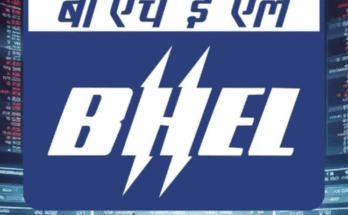1. What is “GMP” / Grey Market Premium?
Before zeroing in on Tata Capital, it helps to clarify what “GMP” (Grey Market Premium) means in the context of IPOs in India.
- The grey market is an informal, unregulated market where shares of a company (often unlisted or yet-to-be-listed) are traded before their official listing on stock exchanges.
- GMP is the premium (in rupees per share) that grey market participants are willing to pay above the IPO issue price. For example, if an IPO issue price is ₹100 and in the grey market the same share is quoted at ₹110, the GMP is ₹10 (or +10 %).
- GMP serves as a rough, unofficial indicator of market sentiment for the IPO: strong demand, expected listing gains, or investor optimism tend to push GMP higher. Conversely, weak interest or pricing concerns may result in low GMP or even grey discounts (i.e. negative GMP).
- Importantly, GMP is not legally binding, not tracked by stock exchanges, and can be volatile. It should be used cautiously and not treated as a guaranteed listing return.
- https://economictimes.indiatimes.com/markets/stocks/live-blog/tata-capital-ipo-gmp-subscription-status-price-band-share-price-listing-date-expert-review-stock-market-news/liveblog/124328817.cms?from=mdr
2. Overview of Tata Capital IPO
To put the GMP in context, here’s a brief summary of the Tata Capital IPO and its key features:
- Tata Capital is a financial services arm of the Tata Group, operating across retail, lending, non-lending, wealth management, etc.
- The IPO is one of the largest in 2025, amounting to ~₹15,512 crore (fresh issue + offer-for-sale). The Economic Times+2The Economic Times+2
- The issue price band is set at ₹310–₹326 per share. Hindustan Times+3Moneycontrol+3Business Today+3
- Because Tata Capital’s unlisted share price in the grey / unlisted markets had been much higher (at times quoted at ₹700+), this IPO pricing is being viewed as a discount to prior unlisted valuations. Hindustan Times+4The Economic Times+4Moneycontrol+4
- The strong brand backing, institutional interest (anchor subscriptions), and the scale of the issue have drawn considerable attention. mint+4The Times of India+4The Economic Times+4
Given these, the GMP numbers become especially interesting as signals of whether investors believe the listing will yield gains.
3. Reported GMPs for Tata Capital IPO & what they imply:
Because grey market trading is informal, different sources may report varying values. Below is a compilation of what various media and IPO tracking platforms are quoting for Tata Capital’s GMP (as of early October 2025):
| Source / Time | GMP Quoted | Approx % Premium (on upper band ₹326) | Notes / Caveats |
| Investorgain (just after price band fixed) | ₹24 | ~7.36 % Moneycontrol | Indicates optimism soon after price announcement |
| Livemint (pre-subscription period) | ₹21 | ~6.4 % mint | Moderate enthusiasm |
| GoodReturns | ₹24 | ~7.4 % Goodreturns | Similar to Investorgain figure |
| Business Today | ₹24–26 | ~7–8 % Business Today | Suggesting decent listing gain |
| India Today | ₹27 (as of Sept 30) | ~8.3 % India Today | One of the higher quoted values |
| The Hans India (on listing/open day) | ₹13 | ~4 % The Hans India | A drop from earlier higher GMP |
| Livemint (day 1, during subscription) | ₹13 (down from ₹20) | ~4 % | Indicates decline in grey market premium as IPO draws nearer mint |
| Financial Express (on IPO open day) | ₹9 | ~2.8 % | More conservative / lower premium Financial Express |
| IPOWatch / IPO tracking site | ₹8 | ~2.5 % | Another lower GMP figure near IPO days IPO Watch |
From the above, a few observations emerge:
- GMP has been volatile — it started relatively high (₹20–₹30 range) when anticipation peaked, but as the IPO date approached and uncertainties crystallized, the quoted premium has moderated (e.g. down to ₹13, ₹9, or ₹8).
- Estimations of listing price
- If one takes GMP = ₹24, then listing price = ₹326 + ₹24 = ~₹350 (around +7–8 % gain).
- If GMP = ₹13, listing ~₹339, i.e. ~4% gain.
- Thus, the range of expectations is wide, reflecting mixed sentiment.
- GMP vs unlisted vs IPO pricing
- Earlier, Tata Capital’s unlisted share price was much higher (₹700+ range) in private / grey markets. Hindustan Times+4The Economic Times+4Moneycontrol+4
- The IPO pricing (₹310–₹326) is significantly below those prior unlisted valuations, which may mean that part of the “discount” expectation is already built in. mint+3The Economic Times+3Moneycontrol+3
- The gap between prior unlisted and current IPO + GMP also raises concerns: is the earlier unlisted pricing over-inflated? Will investor enthusiasm be sustained?
- Downward trend as IPO nears
- The drop from higher GMPs to more modest ones (₹13, ₹9) suggests some cooling of sentiment, perhaps due to risk re-evaluation, the sheer size of the issue, or increased scrutiny by investors.
Thus, while early indicators pointed to potential double-digit listing gains, as the IPO approached, more cautious outlooks reduced the implied premium.
4. Risks, caveats & what GMP shouldn’t be over-relied upon:
While grey market premiums provide useful color, they should be treated with caution. Here are key risks and caveats:
a. GMP is informal and unregulated
It’s not part of any exchange or legally enforceable. Quotes are based on traders’ estimates, rumors, demand–supply in informal networks, and can swing sharply with news.
b. Low or negative GMP possible
If investor sentiment turns negative (e.g. weak subscription, overvaluation, macro risk), GMP can shrink or even go negative (shares quoted below issue price).
c. Overestimation and hype
Sometimes GMP may be inflated by speculators hoping for high listing gains. If fundamentals don’t support it, listing might underperform the GMP-based estimate.
d. Size, liquidity and allocation risk
For very large IPOs (like Tata Capital), oversubscription, allocation constraints, or regulatory / valuation scrutiny can limit upside, even if GMP is optimistic.
e. Timing risk
GMP often peaks days before listing, but in the final stretch as subscription trends emerge, GMP may adjust downward (as seen here). The GMP near listing is likely a more realistic signal than earlier estimates.
f. Past examples of disappointments
There have been IPOs where grey market participants lost capital if the listing disappointed. Hence, GMP should not be taken as guaranteed profit. Value Research Online
5. What to infer and how an investor might use this GMP data:
Given all this, here’s how an investor might interpret the Tata Capital GMP data:
- Sentiment indicator, not guarantee
Use GMP as a gauge of how bullish/optimistic the investor community is, not as a concrete expected return. - Trend is more meaningful than absolute number
The fact that GMP started high and then declined suggests that optimism is moderating. That may signal some caution is creeping in among investors. - Combine with fundamentals / valuation
One should compare implied listing price (IPO price + GMP) against Tata Capital’s financial metrics, peer valuation, growth prospects, and risk factors. If GMP implies overly aggressive return, be wary. - Use latest GMP nearer the IP O date
The GMP closer to the listing date is likely more reliable than older quotes. - Adjust expectations for large size / institutional demand
Because Tata Capital’s IPO is huge and has strong anchor investor participation, institutional dynamics may influence listing performance more than retail speculation.
6. Summary & Outlook:
- Tata Capital’s IPO is one of the marquee deals of 2025, carrying high expectations given its Tata Group backing and scale.
- Early GMP quotes (₹20–₹30) signaled hopes of ~6–9 % listing gains.
- However, as the issue nears, GMP has moderated (₹8–₹13 in many sources), indicating some cooling of sentiment.
- The discount compared to prior unlisted valuations adds to the intrigue but also raises caution about overvaluation in the unlisted market.
- Ultimately, GMP is a helpful sentiment barometer, not a guarantee. A well-informed decision should weigh GMP alongside valuation, competitive positioning, financials, risks, and macro environment.
- For investors, it may be prudent to treat the GMP-implied returns as optimistic estimates, factor in margin of safety, and not let GMP alone drive the investment decision.
If you like, I can also simulate possible listing outcomes (e.g. with GMP = ₹8, ₹13, ₹24) and compute expected returns — would you like me to do that?




